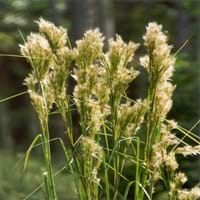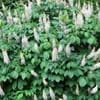Life Span
Perennial
Perennial
Origin
Southeastern United States
Caribbean, Central America
Types
Not available
Broomsedge Bluestem, Broomsedge
Number of Varieties
Not Available
Habitat
Bluffs, Coastal Regions, Stream side, Woods
ditches, Grassland, Moist Ditches, Moist Soils, Roadsides
USDA Hardiness Zone
5-9
5-9
Sunset Zone
Not Available
H1, 3a, 3b, 4, 5, 6, 7, 8, 9, 14, 15, 16, 17, 18, 19, 20, 21, 22, 23, 24
Habit
Spreading
Upright/Erect
Flower Color
White, Pink
Cream, Green, White
Flower Color Modifier
Bicolor
Bicolor
Fruit Color
Brown
Not Available
Leaf Color in Spring
Green
Green, Blue Green
Leaf Color in Summer
Dark Green
Light Green
Leaf Color in Fall
Lemon yellow, Yellow green
Gray Green, Yellow green, Bronze
Leaf Color in Winter
Not Available
Gold, Tan, Bronze
Leaf Shape
Palmate
Grass like
Plant Season
Spring, Summer, Fall
Fall, Winter
Sunlight
Full Sun, Partial Sun, Partial shade
Full Sun, Partial Sun
Type of Soil
Clay, Loam, Sand
Clay, Loam, Sand
The pH of Soil
Acidic, Neutral, Alkaline
Acidic, Neutral, Alkaline
Soil Drainage
Average
Average
Bloom Time
Summer, Late Summer
Late Summer, Early Fall, Fall, Late Fall, Early Winter
Tolerances
Salt, Wind
Not Available
Where to Plant?
Ground, Pot
Ground
How to Plant?
Cuttings, Seedlings
Root Division, Seedlings
Plant Maintenance
Low
Medium
Watering Requirements
Keep the Soil well drained, Requires regular watering
Keep ground moist, Water Deeply
In Summer
Lots of watering
Lots of watering
In Spring
Moderate
Moderate
In Winter
Average Water
Average Water
Soil pH
Acidic, Neutral, Alkaline
Acidic, Neutral, Alkaline
Soil Type
Clay, Loam, Sand
Clay, Loam, Sand
Soil Drainage Capacity
Average
Average
Sun Exposure
Full Sun, Partial Sun, Partial shade
Full Sun, Partial Sun
Pruning
Remove damaged leaves, Remove dead branches, Remove dead flowers, Remove dead leaves
Cut or pinch the stems, Remove damaged leaves, Remove dead branches, Remove dead leaves
Fertilizers
14-14-14 Fertilizer, Apply N-P-K, slow-release fertilizers
All-Purpose Liquid Fertilizer
Pests and Diseases
Edema, Powdery mildew, Verticillium Wilt
Red blotch
Plant Tolerance
Salt, Wind
Drought
Flower Petal Number
Single
Single
Foliage Texture
Coarse
Coarse
Foliage Sheen
Matte
Matte
Invasive
Sometimes
Sometimes
Attracts
Butterflies, Hummingbirds
Birds, Butterflies
Allergy
Pollen
Not Available
Aesthetic Uses
Cottage Garden, Showy Purposes
Ground Cover
Beauty Benefits
Not Available
Not Available
Environmental Uses
Air purification, Wildlife
Air purification, Food for animals, Food for birds, Provides ground cover, Wildlife
Medicinal Uses
Antirheumatic, Colic, constipation, Piles
Not Available
Part of Plant Used
Seeds
Seeds
Other Uses
Used for making soaps
Used as Ornamental plant
Used As Indoor Plant
No
No
Used As Outdoor Plant
Yes
Yes
Garden Design
Feature Plant, Foundation, Screening, Wind Break
Container, Dried Flower/Everlasting, Feature Plant, Mixed Border, Rock Garden / Wall
Botanical Name
AESCULUS parviflora
ANDROPOGON glomeratus
Common Name
bottlebrush buckeye, dwarf horse chestnut
Bushy Beardgrass, Bushy Bluestem, Bushy Broom Grass
In Hindi
Bottlebrush Buckeye
Bushy Bluestem plant
In German
Buckeye Putzer
Bushy Bluestem Pflanze
In French
Bottlebrush Buckeye
plante buissonnante Bluestem
In Spanish
bottlebrush Buckeye
planta arbustiva andropogon
In Greek
bottlebrush Buckeye
φυτό θαμνώδη BLUESTEM
In Portuguese
Bottlebrush Buckeye
planta arbustiva Bluestem
In Polish
Bottlebrush Buckeye
Krzaczaste Bluestem roślin
In Latin
bottlebrush Buckeye
Bushy bluestem herba
Phylum
Magnoliophyta
Magnoliophyta
Class
Magnoliopsida
Liliopsida
Order
Sapindales
Cyperales
Family
Hippocastanaceae
Poaceae
Genus
Aesculus
Andropogon
Clade
Angiosperms, Eudicots, Rosids
Angiosperms, Commelinids, Monocots
Tribe
Not Available
Andropogoneae
Subfamily
Hippocastanoideae
Panicoideae
Season and Care of Bottlebrush Buckeye and Bushy Bluestem
Season and care of Bottlebrush Buckeye and Bushy Bluestem is important to know. While considering everything about Bottlebrush Buckeye and Bushy Bluestem Care, growing season is an essential factor. Bottlebrush Buckeye season is Spring, Summer and Fall and Bushy Bluestem season is Spring, Summer and Fall. The type of soil for Bottlebrush Buckeye is Clay, Loam, Sand and for Bushy Bluestem is Clay, Loam, Sand while the PH of soil for Bottlebrush Buckeye is Acidic, Neutral, Alkaline and for Bushy Bluestem is Acidic, Neutral, Alkaline.
Bottlebrush Buckeye and Bushy Bluestem Physical Information
Bottlebrush Buckeye and Bushy Bluestem physical information is very important for comparison. Bottlebrush Buckeye height is 180.00 cm and width 180.00 cm whereas Bushy Bluestem height is 120.00 cm and width 75.00 cm. The color specification of Bottlebrush Buckeye and Bushy Bluestem are as follows:
Bottlebrush Buckeye flower color: White and Pink
Bottlebrush Buckeye leaf color: Green
Bushy Bluestem flower color: Cream, Green and White
- Bushy Bluestem leaf color: Green and Blue Green
Care of Bottlebrush Buckeye and Bushy Bluestem
Care of Bottlebrush Buckeye and Bushy Bluestem include pruning, fertilizers, watering etc. Bottlebrush Buckeye pruning is done Remove damaged leaves, Remove dead branches, Remove dead flowers and Remove dead leaves and Bushy Bluestem pruning is done Cut or pinch the stems, Remove damaged leaves, Remove dead branches and Remove dead leaves. In summer Bottlebrush Buckeye needs Lots of watering and in winter, it needs Average Water. Whereas, in summer Bushy Bluestem needs Lots of watering and in winter, it needs Average Water.





